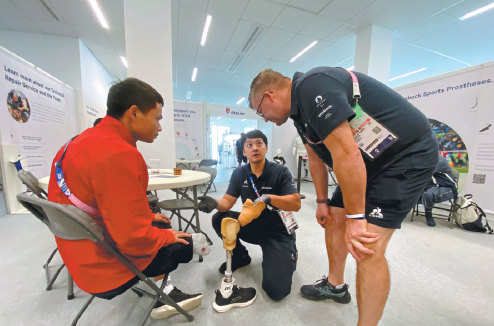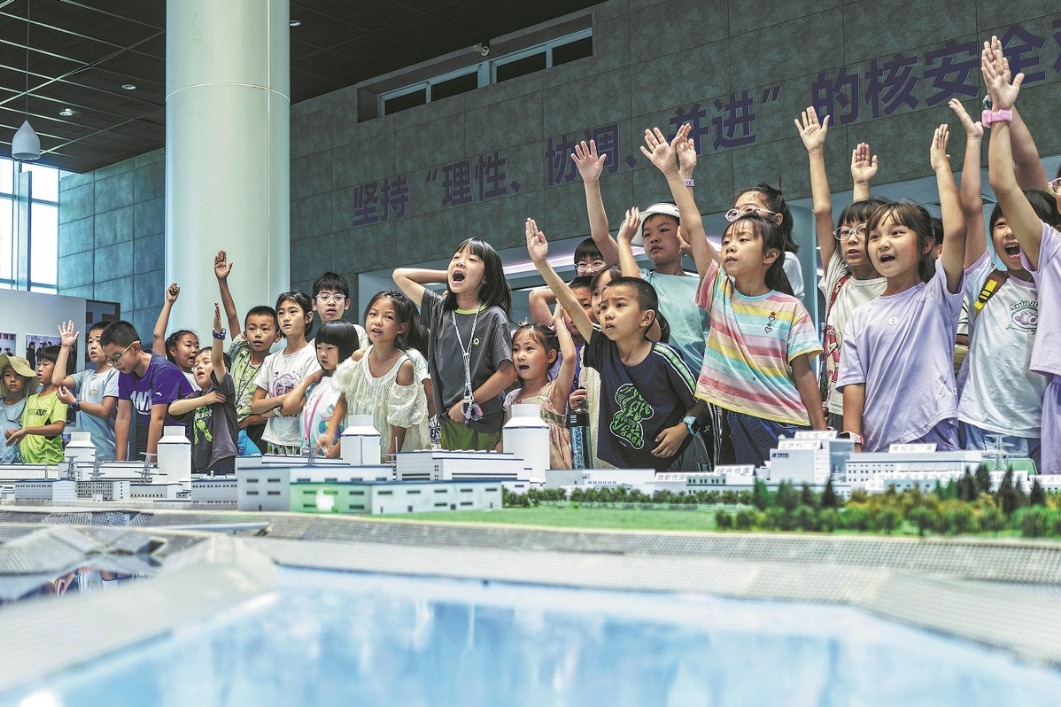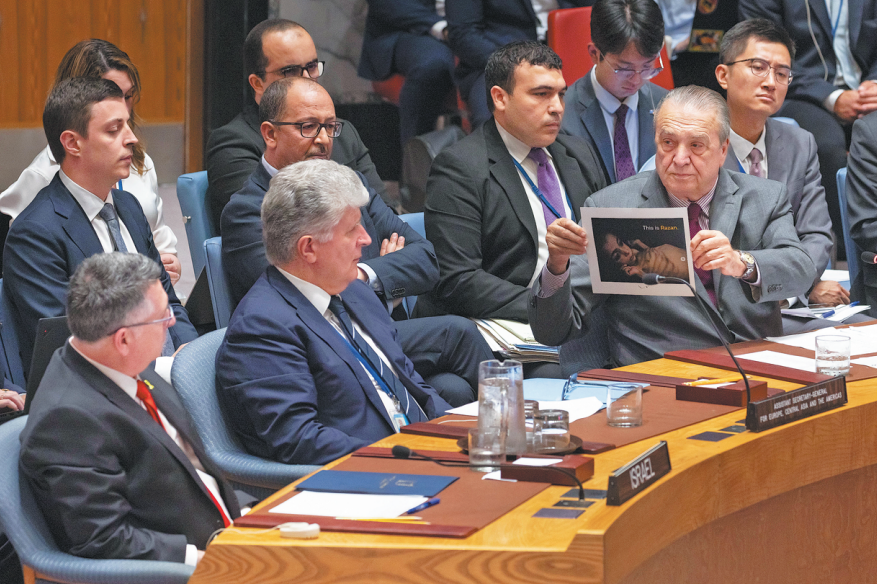'Wheelchair doctor' offers a sporting chance
Expertise and knowledge acquired over years keep the Paralympians going in the arena, Li Yingxue reports.

If a wheelchair malfunctions, it's like a body catching a cold. For Zhu Siwei, a "wheelchair doctor", diagnosing these issues has become second nature.
Using techniques — observation, listening, questioning, and examination — he's spent the past decade honing his craft, fixing wheelchairs one by one.
At 33, Zhu brought his expertise to the world stage this summer at the Paris Paralympics, where he worked in the repair centers at both the Paralympic Village and competition venues.
His role was crucial. Much like the medical care provided to athletes, wheelchair repair is an essential part of Paralympic support, ensuring athletes can compete and live comfortably. As part of a technical team, Zhu offered free repairs to athletes and officials from around the globe, keeping their equipment in top shape.
"Every day is different," Zhu says. "Sometimes it's a simple issue, like a loose screw or a rusted part, but other times it requires a detailed examination to figure out what's wrong. Some repairs take half an hour; others can stretch to two or three hours."
The smallest issues can have a major impact. "On the field, athletes rely on their devices to compete. Off the field, these devices help them live comfortably and move freely in the Paralympic Village," Zhu says.
At the assistive device repair center in the Paralympic Village, Zhu spent most of his time working. All the technicians there were invited by Ottobock, an international medical technology company.
According to Jennifer Duke, a staff member of Ottobock who worked at the front desk of the repair center, there were about 180 technicians from across the globe including China, Canada, France, and the Netherlands. "They work in early and late shifts at the Paralympic Village and the competition venues," she explains.
During the Paris Paralympics, the team of prosthetists, orthotists, wheelchair specialists, and other technicians completed around 2,700 repairs — a higher demand than ever before at the Paralympics. About 55 percent of those repairs were on wheelchairs.
In addition to wheelchair repairs, athletes and officials with disabilities could also have their prostheses and other assistive devices fixed. They would first visit the front desk to describe their needs, and the staff would assign a technician accordingly.
During the Paralympics, he recalls fixing a wheelchair for a Ukrainian athlete. "It wasn't a major problem," Zhu says. "When he sat down, the side panel would brush against the wheel, making it uncomfortable to use."
Zhu's fix was straightforward: He added spacers to the inside of the wheel, pushing it slightly outward so it no longer rubbed against the panel. He and the athlete went through several rounds of adjustments to find the perfect balance.
Athletes typically wait in a nearby lounge while Zhu works, then test their wheelchairs once he's done. If further tweaks are needed, Zhu does them on the spot.
"Some athletes have their own ideas about how their wheelchairs should be fine-tuned, and some have even customized them in ways that don't follow standard manufacturing practices," Zhu explains. "These cases are more challenging because I need to figure out the logic behind their modifications and make adjustments that align with their thinking."
Zhu describes how each technician on the team brings their own expertise — some specialize in sewing, others in welding. Some focus on wheelchairs, while others repair prosthesis.
"Many of the technicians from other countries have years of experience and a deep understanding of wheelchair repair," Zhu says. "It's a rare and valuable opportunity to work alongside them."
In the Paralympic Village, Zhu sometimes found himself going beyond his official duties. When a motorized suitcase that an athlete was using for mobility wouldn't charge, even though it wasn't his responsibility, Zhu stepped in to help solve the problem.
He could sense the athletes' appreciation after fixing their wheelchairs, their gratitude unmistakable in their eyes. Some even gave him pins as mementos, tokens of thanks for his help.
At this year's Paris Paralympics, Zhu's work extended beyond the Paralympic Village. He provided on-site support at the table tennis and wheelchair tennis venues, marking his third stint as a technician at the Games — and his first at a Summer Paralympics.
Zhu's journey began in 2018, when he was selected as one of two Chinese technicians for wheelchair maintenance at the Pyeongchang Winter Paralympics. He returned for the 2022 Beijing Winter Paralympics, and by the time Paris rolled around, his expertise earned him an invitation to join the technician team once again.
"The Summer Paralympics are busier, with more events and athletes, and a greater variety of wheelchairs," Zhu says. He explains that wheelchairs differ depending on the sport, requiring specific repairs based on how they're used.
"For example, wheelchair basketball is intense, so there's a lot of wear and tear from collisions. On the other hand, some swimmers' wheelchairs take more damage from constant exposure to poolside conditions," Zhu says.
When working on the battered wheelchairs of basketball players, Zhu could feel the intensity of the competition, with every dent and scrape telling a story of the physicality on the court.
Helping more
After graduation, Zhu, a mechanical engineering major, found himself at a crossroads in his career. While many of his classmates pursued traditional paths in the mechanical industry, he chose a different route: dedicating his expertise to serving individuals with disabilities.
"When I selected this profession, I saw it as an opportunity to enhance the lives of people with disabilities," he says. "Witnessing their resilience, especially among para athletes, inspires me. It's an honor to assist them both in their daily lives and in competitions."
With a decade of experience in wheelchair repair, Zhu has observed the continual evolution of the equipment used by disabled individuals. "Initially, most wheelchairs were made of aluminum. Now, many are crafted from carbon fiber, which offers a lighter alternative but is more prone to wear and tear," he explains.
"The latest designs emphasize user-friendliness and comfort, aligning closely with human biomechanics," Zhu adds. "As technology advances, the design of wheelchairs will only get better."
As the wheelchairs change, Zhu recognizes the importance of improving his repair skills alongside them. "The key to effective repair lies in experience. It's crucial to grasp how these devices operate, identify issues, and devise solutions. Adaptability is vital, as is listening to the needs of the users," he says.
Wang Tiegang, Zhu's colleague at the repair center during the Paris Paralympics, has dedicated 22 years to wheelchair welding and has also witnessed firsthand the advancements in equipment for people with disabilities.
"We're gradually moving toward high-tech solutions," Wang says. "This year, we've integrated 3D printing technology on-site, and new wheelchairs are becoming lighter. The demands on welding techniques are also growing, so we're committed to ongoing learning."
This year, Zhu has taken on a new initiative aimed at empowering individuals with disabilities by training them to repair their own wheelchairs and fostering a sense of community support.
"When a wheelchair breaks down, it's often much more challenging for someone with a disability to go out and find a repair shop compared to able-bodied individuals. They also tend to have their own circles," Zhu explains. "We aim to teach them simple repair techniques, enabling them to assist one another with basic fixes."
He shares that this project, which began as a pilot program in Beijing this year, has already completed two training sessions. The participants have begun providing volunteer repair services in their communities, fostering both independence and collaboration among those they serve.


Today's Top News
- 25-yuan roast duck reflects progress of rural vitalization
- Xi set stage for rise of cultural powerhouse
- Reciprocity in US-led global trade an illusion
- AI 'waifus' pose grave emotional risks
- Hong Kong advances as global asset management hub
- Chili peppers every day can keep the doctor away






























